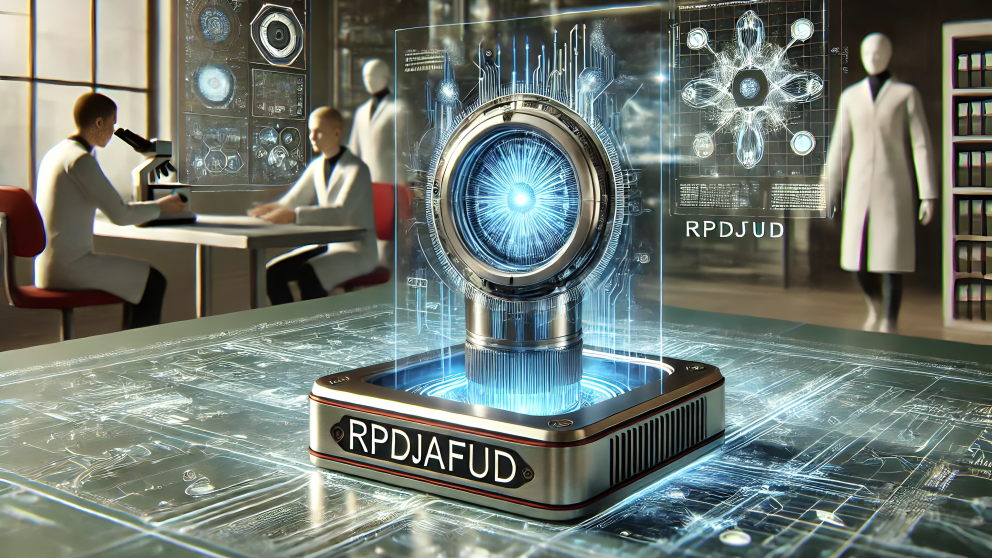
What is RPDJAFUD and Why It Matters
The Rise of Mysterious Digital Acronyms
In the age of digital innovation, acronyms and obscure terms frequently surface with sudden popularity, often leaving the general public questioning their meaning. At first glance, this string of letters appears cryptic, but its widespread use in tech circles and social media discussions hints at a deeper significance. Understanding terms like RPDJAFUD is crucial for staying current with digital culture, especially in fields like cybersecurity, AI, and digital communications.
RPDJAFUD may not yet be recognized by mainstream dictionaries or academic publications, but it holds substantial value within specific digital subcultures. From forums to encrypted chats, its usage suggests it is more than just a random collection of characters. Whether it is a code, a protocol, or a digital movement, unraveling its meaning reveals insights into how online communities evolve and communicate in layers of abstraction.
The Origins and Context of RPDJAFUD
Tracing Its Footprints Across Digital Platforms
The origin of RPDJAFUD is still shrouded in ambiguity, but digital footprints trace back to underground tech forums and closed developer communities. Initial uses date back to early 2023, where coders referenced it in discussions around decentralized systems and obscure encryption models. Some believe it’s an acronym derived from a technical process or a project name within a niche developer environment.

Its spread to platforms like Reddit, GitHub, and even Discord groups signaled its migration from obscurity to wider visibility. On social media, speculation surrounding its meaning fueled engagement, leading to theories ranging from “Randomized Protocol for Decentralized Joint Access File Upload Distribution” to “Revolutionary Peer-Distributed Java Architecture for Unified Data.” Whether these definitions are accurate or just creative interpretations, they’ve helped sustain interest in the term.
RPDJAFUD as a Technological Framework
A Potential Backbone of Data Handling
Assuming RPDJAFUD is a technological protocol or framework, it likely deals with managing or distributing data in a decentralized way. This aligns with the increasing demand for peer-to-peer systems and secure file sharing networks. Many in the tech space are exploring tools that do not rely on central authorities or third-party servers, and RPDJAFUD might be one such initiative.
In this scenario, RPDJAFUD could be comparable to technologies like IPFS (InterPlanetary File System) or blockchain-driven data systems. It may serve as a tool that enhances privacy, ensures data integrity, and reduces server dependency. This would make it attractive to communities focused on digital freedom, privacy advocacy, and cyber resilience. Its use would imply not just a shift in tools but a transformation in how digital data is conceptualized and exchanged.
Key Features Hypothetically Linked to RPDJAFUD
Characteristics Based on Observed Usage
Although no official technical documentation currently exists, community dialogue and contextual analysis have attributed the following potential features to RPDJAFUD:
- Decentralized Architecture: Suggesting peer-to-peer data sharing without central servers.
- Strong Encryption: Indicating high-level cryptographic protocols for secure communication.
- Lightweight Protocol: Designed to operate with minimal system resources.
- Modular Integration: Compatible with other frameworks and flexible enough to extend.
- Open Source: Driven by community development and transparency.
These characteristics paint RPDJAFUD as a forward-thinking system aligned with modern digital needs. If proven accurate, such features would place it at the forefront of innovation in secure file transfers and distributed networks.
Cultural Adoption and Symbolism of RPDJAFUD
More Than Just Tech—A Digital Movement
Beyond its possible technical capabilities, RPDJAFUD has become symbolic of underground digital movements that value autonomy, decentralization, and anonymity. Its use in online graffiti, minimalist logos, and even NFTs reflects its status as a badge of identity among certain digital subcultures.

The mystique surrounding it—part meme, part code—has created a unique cultural presence. It embodies a rejection of traditional tech hierarchies and an embrace of experimental design. This is not uncommon in the digital world where movements like Cypherpunks and hacktivists popularized complex, encrypted ideas wrapped in ambiguous terminologies. RPDJAFUD seems to follow a similar path, blurring the lines between innovation and rebellion.
Theoretical Applications of RPDJAFUD
Where It Could Be Used in the Future
If RPDJAFUD turns out to be a viable digital protocol or framework, it could potentially find applications in numerous areas of emerging technology. For example:
- Secure file sharing systems for journalism and whistleblowers
- Blockchain or crypto-based data storage mechanisms
- Decentralized identity management systems
- Encrypted messaging applications
- Autonomous AI communications in distributed networks
Each of these applications would benefit from the types of features RPDJAFUD is rumored to have. In an age where data breaches and surveillance are rampant, solutions offering decentralized, secure, and scalable alternatives are not only welcome—they’re essential.
Challenges and Controversies Around RPDJAFUD
Speculation, Secrecy, and Skepticism
As with any mysterious digital trend, RPDJAFUD has its share of challenges and controversies. For one, its lack of transparency raises questions. Is it a real protocol, or is it an elaborate internet hoax? Without concrete evidence, technical papers, or a leading figure behind the movement, skeptics remain unconvinced.
Moreover, if RPDJAFUD is used in secretive digital spaces, it could potentially become a tool for illicit activity. Any anonymous or encrypted system runs the risk of misuse, and law enforcement often flags such systems for closer scrutiny. This duality—freedom vs. control—is a hallmark of many technologies that disrupt traditional models, and RPDJAFUD seems to sit squarely within this gray area.
RPDJAFUD and the Future of Digital Communication
A Paradigm Shift in the Making?
Even if the specifics of RPDJAFUD remain speculative, the idea of such a protocol points to a growing desire for a new kind of internet—one that values privacy, efficiency, and decentralization. In a digital landscape dominated by mega-corporations and monitored ecosystems, systems like RPDJAFUD represent a pushback. They call for tools that empower users, not extract from them.
The emergence of such movements reflects the public’s shifting attitudes toward control and surveillance. As interest in privacy-first technologies continues to grow, RPDJAFUD—whether real or symbolic—stands as a representation of that trend. It signifies the evolution of the web from static information portals to dynamic, secure, and distributed ecosystems.
How to Get Involved with the RPDJAFUD Movement
Exploring Communities and Contributing to Development
If you’re curious about RPDJAFUD, the best way to start is by exploring online communities where the term is active. Forums like Reddit’s r/privacytoolsIO or GitHub repositories tagged with “decentralized” might offer clues or even early-stage projects related to it. Joining Discord groups focused on digital privacy or blockchain tech can also provide insights.
While official documentation is still missing, enthusiasts can contribute by theorizing frameworks, experimenting with peer-to-peer protocols, or even creating open-source repositories that echo the core values of RPDJAFUD. In doing so, you become part of a broader movement dedicated to reimagining how we interact with data and each other in the digital world.
Conclusion: RPDJAFUD—Speculation or the Future?
At its core, RPDJAFUD is both a mystery and a mirror—reflecting the state of the digital world today. Whether it’s an actual protocol, a creative project, or a symbolic gesture, it has sparked curiosity, debate, and innovation. In an internet filled with noise, terms like RPDJAFUD capture attention because they invite exploration.
The lack of clarity may seem frustrating, but it’s also what gives RPDJAFUD its power. It encourages people to look deeper, to question mainstream narratives, and to collaborate toward new forms of technology. As digital landscapes continue to evolve, mysterious concepts like RPDJAFUD remind us that innovation often starts not with answers—but with questions.
FAQs About RPDJAFUD
1. Is RPDJAFUD a real technology or just a concept?
RPDJAFUD is currently understood more as a conceptual or symbolic idea, though some believe it’s tied to real decentralized tech efforts.
2. What does RPDJAFUD stand for?
There’s no confirmed definition, but many speculate it represents a form of decentralized or encrypted data-sharing protocol.
3. Can I use RPDJAFUD in any software projects?
Unless official documentation or repositories emerge, it’s difficult to implement it. However, related decentralized concepts are already in use.
4. Where can I learn more about RPDJAFUD?
Join forums, privacy-centric groups, and open-source developer communities to stay informed on updates or similar technologies.
5. Is RPDJAFUD safe to use or explore?
As with any technology, ensure you understand its implications. If RPDJAFUD is linked to encryption or anonymous networks, use it responsibly within legal boundaries.
Also Read This: THE MYSTERIOUS WORLD OF JUSZIAROMNTIXRETOS






